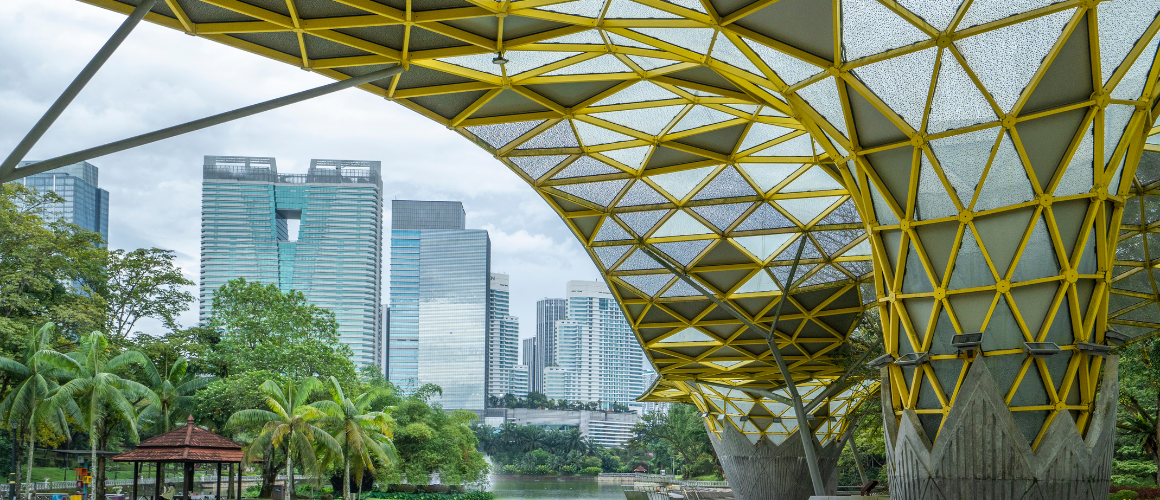
Designing with Data: How AI Shapes Our Built Environment
Imagine if buildings could learn from us, adapt to our needs, and even predict the future. That's not a scene from a sci-fi movie; it's the reality we're moving towards with artificial intelligence (AI) in architecture and construction. This is about a revolution, one where AI is not just a tool but a partner in shaping the world around us. From skyscrapers that breathe to homes that adjust to our moods, AI is unlocking possibilities we've only dreamed of. But what does this mean for us, the people who live, work, and play in these spaces? And how does it change the way architects dream up new worlds? This blog dives into how AI is transforming design and construction, making buildings smarter, more sustainable, and, believe it or not, more human. So, let's start this journey together and explore the architectural revolution powered by AI.
Right now, architecture and AI are like new friends learning a lot from each other. Imagine walking into a building that knows it’s hot outside and cools down just for you. Or a home that changes its lights based on how you feel. Sounds cool, right? That’s what happens when architects and computers team up.
A while ago, designing buildings was all about pencils and paper. Now, it’s about smart software that helps create buildings that weren’t even possible before. Take the Burj Khalifa, for instance. It’s not just tall; it's smart, adjusting to the wind and weather. And then there’s the classic beauty, the Taj Mahal, reminding us how far we've come.

Cities are growing fast, and with AI, we can plan them better. Instead of just letting them spread out wild, AI helps design spaces that are good for us and the planet. It’s about making sure that as we grow, we do it in a smart way that keeps everyone happy and safe.
This blend of old and new, of traditional architecture and futuristic AI, is creating a world where buildings are not just places to live or work. They are becoming smart spaces that understand us and respond to our needs. That’s the journey we’re on - making our spaces smarter, one AI innovation at a time.
AI in architecture is like giving buildings a brain. It’s about making them smart enough to adapt, change, and even take care of us. Imagine a building that knows you’re too hot even before you do and cools down just for you. Or a bridge that can tell engineers it needs fixing before it’s too late. That’s where we’re heading.
This whole idea might sound like it’s from the future, but it’s happening right now. Architects and engineers use AI to design buildings that can change shape with the weather or create spaces that feel just right, every day. For example, kinetic architecture brings buildings to life, letting them move and react to their environment. Think of walls that breathe or roofs that open up to let in light, all on their own.
But it’s not just about flashy moves. AI helps make buildings safer and more comfortable. It can predict how a building will stand up to earthquakes or how to keep the noise down in a busy office. And because AI can look at a ton of designs really fast, it helps architects try out wild new ideas without wasting time or materials.
The coolest part? These innovations make our cities better places to live. Green buildings that save energy, homes that look after our health, and offices that make us happier at work. AI is changing the game, making the impossible possible and turning the places we live, work, and play into spaces that truly understand us.
AI is like a superhero for making our buildings greener and our cities stronger. It's stepping up to tackle big challenges like climate change and energy use, making sure our future is not just brighter but also sustainable.
Here's how it works: AI helps design buildings that breathe easier, use less energy, and fit better with nature. Think of a building that can adjust its own windows and walls to keep the heat out during summer or trap warmth in winter. Or imagine skyscrapers with skin that cleans the air around it. This isn’t make-believe; it’s what AI is making possible right now.
AI also has a big role in making things last longer and stand stronger. By analyzing tons of data, AI predicts what parts of a building might get damaged over time or how to make it through tough weather without a scratch. This means fewer repairs, longer-lasting buildings, and safer homes for everyone.

But AI doesn't stop there. It’s helping architects use materials that are kind to our planet. Before, figuring out the greenest way to build something could take forever. Now, AI speeds up the process, finding the best materials and methods to reduce waste and pollution.
And here's the cherry on top: AI makes it easier to bring all these good ideas to life. It helps everyone from architects to city planners work together more smoothly. With AI, they can test out ideas in virtual worlds before turning them into real projects, saving time, money, and the environment all at once.
So, AI isn't just about cool gadgets and robots. It's a powerful ally in our fight for a more sustainable and resilient world, making sure the places we live and work are good for us and the planet.
Teaching AI in architecture schools is becoming crucial. It’s like giving students a new set of superpowers. But instead of flying or invisibility, they’re learning how to use AI to create smarter, greener buildings. This means future architects will not just draw pretty pictures; they'll make spaces that think and care about the environment.
However, with great power comes great responsibility. Using AI in building design raises big questions. Like, who makes sure the AI does what’s best for people, not just what’s cheapest or easiest? And how do we keep everyone’s personal stuff private when buildings start paying attention to what we do?
There’s also the worry about jobs. If AI can design buildings, what happens to human architects? Well, instead of taking jobs, AI could actually make architects even better at their work, giving them more time to think creatively and solve big problems.
So, teaching about AI isn’t just about how cool the technology is. It’s also about thinking hard about these big questions, making sure we use AI in ways that are fair, safe, and really good for everyone. This means the future of architecture could be not just smarter but also kinder and more responsible.
As we wrap up our journey through the world of AI in architecture, it's clear we're standing at the edge of a new era. AI is not just a tool; it's a partner in our quest to create buildings and spaces that are smarter, more sustainable, and deeply in tune with human needs. This revolution is about more than just technology; it's about reimagining our relationship with the spaces we inhabit. It challenges us to dream bigger, think more creatively, and act more responsibly. The future of architecture, powered by AI, promises a world where buildings not only shelter us but also inspire and care for us. Let's embrace this future with open minds and eager hearts, ready to build a better world together.